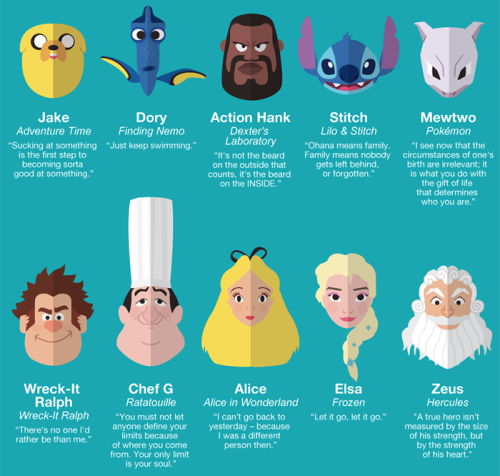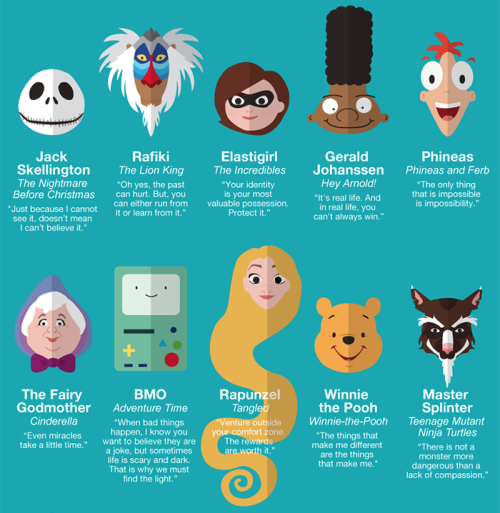Have Astronomers Found Alien Megastructures After All? (No, Probably Not)






Have Astronomers Found Alien Megastructures After All? (No, Probably Not)
“We’ve often found that — when it comes to unexpected astronomical signals — our imaginations run away with us, leading us to immediately jump to conclusions about our greatest hopes and/or fears, like the existence of sentient aliens accessible to us. But the real Universe, every time thus far, has shown itself to be more diverse, complex, and rich in phenomena than we had previously realized, including the existence of quasars, pulsars, exoplanets and more. We haven’t yet ruled out the possibility of alien megastructures, but what we’re most likely seeing is a new type of natural phenomena whose origin is yet unknown. Follow-up observations, particularly those scheduled for 2017, when another major “transit” event is scheduled to occur, should teach us a whole lot more.”
Last year, Penn State astronomer Jason Wright made headlines by claiming that one of the stars being observed by NASA’s Kepler mission might contain alien megastructures around it. The large dips in its light curve didn’t make sense in the context of planets, and the star KIC 8462852 became the target of a great many follow-ups. A binary companion was found, along with no signs of excess infrared emission or artificial radio signatures. However, archival data recently found that the star dimmed by about 20% over the past century. While the alien megastructures possibility cannot be ruled out, a great many other astrophysical possibilities still survive.
More Posts from Evisno and Others
W. M. Keck Observatory telescopes logo. December 2, 2014
Image above: A dusty planetary system (left) is compared to another system with little dust in this artist’s conception. Image Credit: NASA/JPL-Caltech. Planet hunters received some good news recently. A...






Life Advice from 50 Beloved Characters in Kid’s Entertainment by AAA State of Play -source-
Solar System: Things to Know This Week
There’s even more to Mars.

1. Batten Down the Hatches
Good news for future astronauts: scientists are closer to being able to predict when global dust storms will strike the Red Planet. The winds there don’t carry nearly the same force that was shown in the movie “The Martian,” but the dust lofted by storms can still wreak havoc on people and machines, as well as reduce available solar energy. Recent studies indicate a big storm may be brewing during the next few months.
+ Get the full forecast

2. Where No Rover Has Gone Before
Our Opportunity Mars rover will drive down an ancient gully that may have been carved by liquid water. Several spacecraft at Mars have observed such channels from a distance, but this will be the first up-close exploration. Opportunity will also, for the first time, enter the interior of Endeavour Crater, where it has worked for the last five years. All this is part of a two-year extended mission that began Oct. 1, the latest in a series of extensions going back to the end of Opportunity’s prime mission in April 2004. Opportunity landed on Mars in January of that year, on a mission planned to last 90 Martian days (92.4 Earth days). More than 12 Earth years later, it’s still rolling.
+ Follow along + See other recent pictures from Endeavour Crater

3. An Uphill Climb
Opportunity isn’t the only NASA Mars rover getting a mission extension. On the other side of the planet, the Curiosity rover is driving and collecting samples amid some of the most scenic landscapes ever visited on Mars. Curiosity’s two-year mission extension also began Oct. 1. It’s driving toward uphill destinations, including a ridge capped with material rich in the iron-oxide mineral hematite, about a mile-and-a-half (two-and-a-half kilometers) ahead. Beyond that, there’s an exposure of clay-rich bedrock. These are key exploration sites on lower Mount Sharp, which is a layered, Mount-Rainier-size mound where Curiosity is investigating evidence of ancient, water-rich environments that contrast with the harsh, dry conditions on the surface of Mars today.
+ Learn more

4. Keep a Sharp Lookout
Meanwhile, the Mars Reconnaissance Orbiter continues its watch on the Red Planet from above. The mission team has just released a massive new collection of super-high-resolution images of the Martian surface.
+ Take a look

5. 20/20 Vision for the 2020 Rover
In the year 2020, Opportunity and Curiosity will be joined by a new mobile laboratory on Mars. In the past week, we tested new “eyes” for that mission. The Mars 2020 rover’s Lander Vision System helped guide the rocket to a precise landing at a predesignated target. The system can direct the craft toward a safe landing at its primary target site or divert touchdown toward better terrain if there are hazards in the approaching target area.
+ Get details
Discover the full list of 10 things to know about our solar system this week HERE.
Make sure to follow us on Tumblr for your regular dose of space: http://nasa.tumblr.com

That’s Electrooculography!
The eye is a basically a dipole ( a separation of electric charges )
It was observed by Reymond in 1848 that the cornea of the eye is electrically positive relative to the back of the eye.This potential was surprisingly not dependent on the amount of light falling on the eye.

The cornea is the transparent front part of the eye
Dipoles and Eye Tracking
This means that as the eye moves from side to side, the dipole moves as well. To capture the movement of the dipole, one places two electrodes on both sides of the eye. ( like the one placed on this guy )

If the eye moves from the center position to the right, one of the electrodes becomes slightly positive and the other negative. This leads to a spike in the positive direction.

Source
And if the eye moves from the center position to the left, the polarity of the electrodes reverses. This leads to a spike in the negative direction.

That’s about it. That’s EOG for you all. I hope you guys enjoyed this post.
Have a great day!

Sources and Extras:
More about EOG
Gif source : The backyard brains

Star Clouds Toward the Southern Crown
Look Up! Perseid Meteor Shower Peaks Aug. 11-12
Asteroid Watch logo. Aug. 2, 2016 Make plans now to stay up late or set the alarm early next week to see a cosmic display of “shooting stars” light up the night sky. Known for it’s fast and bright meteors, the annual Perseid meteor shower is anticipated to be one of the best potential meteor viewing opportunities this year. The Perseids show up every year in August when Earth ventures through trails of debris left behind by an ancient comet. This year, Earth may be in for a closer encounter than usual with the comet trails that result in meteor shower, setting the stage for a spectacular display.
Image above: An outburst of Perseid meteors lights up the sky in August 2009 in this time-lapse image. Stargazers expect a similar outburst during next week’s Perseid meteor shower, which will be visible overnight on Aug. 11 and 12. Image Credits: NASA/JPL. “Forecasters are predicting a Perseid outburst this year with double normal rates on the night of Aug. 11-12,” said Bill Cooke with NASA’s Meteoroid Environments Office in Huntsville, Alabama. “Under perfect conditions, rates could soar to 200 meteors per hour.” An outburst is a meteor shower with more meteors than usual. The last Perseid outburst occurred in 2009. Every Perseid meteor is a tiny piece of the comet Swift-Tuttle, which orbits the sun every 133 years. Each swing through the inner solar system can leave trillions of small particles in its wake. When Earth crosses paths with Swift-Tuttle’s debris, specks of comet-stuff hit Earth’s atmosphere and disintegrate in flashes of light. These meteors are called Perseids because they seem to fly out of the constellation Perseus. Most years, Earth might graze the edge of Swift-Tuttle’s debris stream, where there’s less activity. Occasionally, though, Jupiter’s gravity tugs the huge network of dust trails closer, and Earth plows through closer to the middle, where there’s more material. This may be one of those years. Experts at NASA and elsewhere agree that three or more streams are on a collision course with Earth. “Here’s something to think about. The meteors you’ll see this year are from comet flybys that occurred hundreds if not thousands of years ago,” said Cooke. “And they’ve traveled billions of miles before their kamikaze run into Earth’s atmosphere.” How to Watch the Perseids The best way to see the Perseids is to go outside between midnight and dawn on the morning of Aug. 12. Allow about 45 minutes for your eyes to adjust to the dark. Lie on your back and look straight up. Increased activity may also be seen on Aug. 12-13. For stargazers experiencing cloudy or light-polluted skies, a live broadcast of the Perseid meteor shower will be available via Ustream overnight on Aug. 11-12 and Aug. 13-14, beginning at 10 p.m. EDT.: http://www.ustream.tv/channel/nasa-msfc
Meteor Moment: Viewing Tips.
More about the Perseids Perseid meteors travel at the blistering speed of 132,000 miles per hour (59 kilometers per second). That’s 500 times faster than the fastest car in the world. At that speed, even a smidgen of dust makes a vivid streak of light when it collides with Earth’s atmosphere. Peak temperatures can reach anywhere from 3,000 to 10,000 degrees Fahrenheit as they speed across the sky. The Perseids pose no danger to Earth. Most burn up 50 miles above our planet. But an outburst could mean trouble for spacecraft. About the Meteoroid Environment Office It’s Cooke’s job to help NASA understand and prepare for risks posed by meteoroids. He leads a team of meteor experts in the Meteoroid Environments Office at NASA’s Marshall Space Flight Center. They study meteoroids in space so that NASA can protect our nation’s satellites, spacecraft and even astronauts aboard the International Space Station from these bits of tiny space debris. Related links: Meteors & Meteorites: http://www.nasa.gov/topics/solarsystem/features/watchtheskies/index.html Meteoroid Environments Office: https://www.nasa.gov/offices/meo/home/index.html Image (mentioned), Video, Text, Credits: NASA/Jennifer Harbaugh. Greetings, Orbiter.ch Full article

Quantum Tunneling
Quantum tunneling refers to the quantum mechanical phenomenon where a particle tunnels through a barrier that it classically could not surmount. This plays an essential role in several physical phenomena, such as the nuclear fusion that occurs in main sequence stars like the Sun. It has important applications to modern devices such as the tunnel diode, quantum computing, and the scanning tunneling microscope. The effect was predicted in the early 20th century and its acceptance as a general physical phenomenon came mid-century.
Tunneling is often explained using the Heisenberg uncertainty principle and the wave–particle duality of matter. Pure quantum mechanical concepts are central to the phenomenon, so quantum tunneling is one of the novel implications of quantum mechanics.
source
‘아렌델’은 빅뱅 이후 첫 10억년 이내에 존재했던 별입니다. 우리 지구에 닿기까지 129억년이나 걸린 것이지요!
우리 태양보다 적어도 50배 크고, 몇백만 배 밝아요. 평소에는 지구에서 볼 수 없지만, 우리와 ‘아렌델’ 사이에 있는 은하단이 렌즈 역할을 했습니다!
A View into the Past

Our Hubble Space Telescope just found the farthest individual star ever seen to date!
Nicknamed “Earendel” (“morning star” in Old English), this star existed within the first billion years after the universe’s birth in the big bang. Earendel is so far away from Earth that its light has taken 12.9 billion years to reach us, far eclipsing the previous single-star record holder whose light took 9 billion years to reach us.
Though Earendel is at least 50 times the mass of our Sun and millions of times as bright, we’d normally be unable to see it from Earth. However, the mass of a huge galaxy cluster between us and Earendel has created a powerful natural magnifying glass. Astronomers expect that the star will be highly magnified for years.
Earendel will be observed by NASA’s James Webb Space Telescope. Webb's high sensitivity to infrared light is needed to learn more about this star, because its light is stretched to longer infrared wavelengths due to the universe's expansion.





Nearly every day Cassini sends back something amazing to sit and wonder at.
1) Saturn’s rings, 15 July 2014
2) Tethys / Saturn’s rings 14 July 2014
3) Disk of Saturn 14 July 2014
4) Prometheus / F Ring 13 July 2014
5) Pan in the Encke Gap 13 July 2014
All raw and unprocessed images from saturn.jpl.nasa.gov
NASA logo. April 27, 2015 As the saying goes, timing is everything. More so in 21st-century space exploration where navigating spacecraft precisely to far-flung destinations—say to Mars or even more distant Europa, a moon of Jupiter—is critical. NASA is making great strides...
-
 bycmlgrsl-blog liked this · 9 years ago
bycmlgrsl-blog liked this · 9 years ago -
 brightmane57 reblogged this · 9 years ago
brightmane57 reblogged this · 9 years ago -
 brightmane57 liked this · 9 years ago
brightmane57 liked this · 9 years ago -
 torquez64-blog liked this · 9 years ago
torquez64-blog liked this · 9 years ago -
 indyfilmlife-blog liked this · 9 years ago
indyfilmlife-blog liked this · 9 years ago -
 88mistyblue88-blog liked this · 9 years ago
88mistyblue88-blog liked this · 9 years ago -
 evisno reblogged this · 9 years ago
evisno reblogged this · 9 years ago -
 evisno liked this · 9 years ago
evisno liked this · 9 years ago -
 blackmaskoffear reblogged this · 9 years ago
blackmaskoffear reblogged this · 9 years ago -
 blackmaskoffear liked this · 9 years ago
blackmaskoffear liked this · 9 years ago -
 i-blame-the-narglez reblogged this · 9 years ago
i-blame-the-narglez reblogged this · 9 years ago -
 brumadyan-blog reblogged this · 9 years ago
brumadyan-blog reblogged this · 9 years ago -
 librarifan-blog liked this · 9 years ago
librarifan-blog liked this · 9 years ago -
 theredqueen01 liked this · 9 years ago
theredqueen01 liked this · 9 years ago -
 darknessiscool47 reblogged this · 9 years ago
darknessiscool47 reblogged this · 9 years ago -
 darknessiscool47 liked this · 9 years ago
darknessiscool47 liked this · 9 years ago -
 kcaj-gardner liked this · 9 years ago
kcaj-gardner liked this · 9 years ago -
 problematicmess-oopsies liked this · 9 years ago
problematicmess-oopsies liked this · 9 years ago -
 lensel liked this · 9 years ago
lensel liked this · 9 years ago -
 karcador liked this · 9 years ago
karcador liked this · 9 years ago -
 neptunesayshi reblogged this · 9 years ago
neptunesayshi reblogged this · 9 years ago -
 starboxx-blog1 reblogged this · 9 years ago
starboxx-blog1 reblogged this · 9 years ago -
 starboxx-blog1 liked this · 9 years ago
starboxx-blog1 liked this · 9 years ago -
 woodiechip-blog liked this · 9 years ago
woodiechip-blog liked this · 9 years ago -
 lanloosh reblogged this · 9 years ago
lanloosh reblogged this · 9 years ago -
 wipedout-wonho liked this · 9 years ago
wipedout-wonho liked this · 9 years ago -
 the-real-nasanerd liked this · 9 years ago
the-real-nasanerd liked this · 9 years ago -
 startswithabang reblogged this · 9 years ago
startswithabang reblogged this · 9 years ago